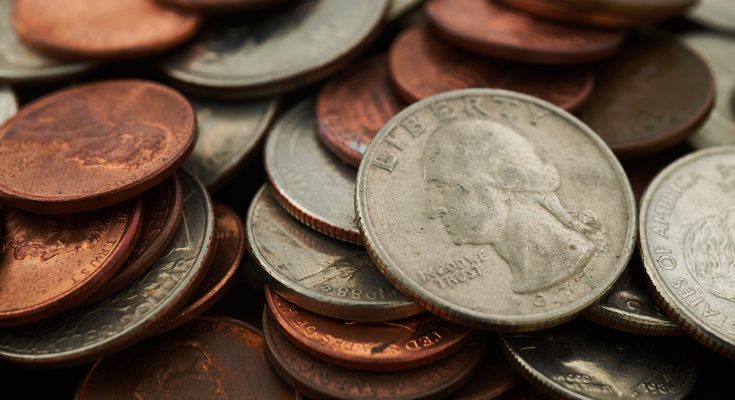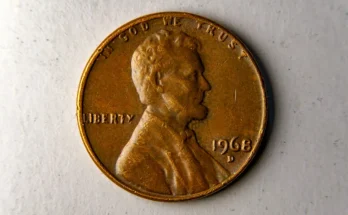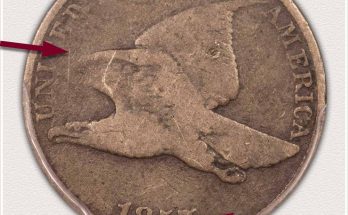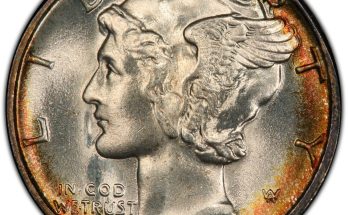Rich with history and intrigue, the world of coin collecting charts the course of history, but when it comes to collectible coins, it’s the oddities defying the norms of minting perfection that are prized as numismatic treasures by collectors.
Every imperfection of each rare error coin and misprint tells its own story, and collectors cherish these distinct quirks and differences. As pintsize pieces of history, these rare coins are defined and celebrated for the small deviations and errors that make them so valuable.
The allure of owning a rare error coin is particularly appealing for collectors, and just like rare vinyl records and first edition books, it’s scarcity that drives value and demand, as collectors vie to own the mistakes that created individual pieces of history.
What Causes Error Coins and Misprints?
In a glass is half full approach to collection, error coins are celebrated for their difference. There are a number of processes that could be behind these differences, which elevate coins from their functional purpose to highly sought-after collectibles.
One factor that can contribute to misprints are planchet errors. This is when the round metal disk intended to be struck as a coin either skips the stamping process, becomes misaligned, or is even struck in a metal meant for another coin, leading to unusual weight and color.
Similarly, double die errors occur when a coin struck more than once by the same die causes overlapping images, resulting in a shadow-like effect. The same applies to when imperfections in the die are transferred to the coin, appearing as raised lines or cracks on its surface.

1955/55 DOUBLED DIE LINCOLN CENT BU. Sold for $1,750 via Silver City Auctions (August 2023)
And off-center striking errors can carry a similar collectible appeal, as coins that haven’t been properly aligned with the die can produce an off-center coin, while coins struck without a perimeter collar can appear to expand beyond their normal diameter.
How Do Error Coins Affect Their Value in the Numismatic Market?
Like Bob Ross said, “we don’t make mistakes, just happy little accidents” and that ethos applies to the value of error coins. These aren’t errors, more like cherished accidents, which can seriously elevate a coin’s value.
The precise value depends on several factors, most notably a coin’s rarity. This is especially true of numismatic marvels, and as a general principle, the rarer the error, the more valuable the coin. Error coins with low mintage numbers increase their desirability, but it’s the coins with very few examples in circulation that command the highest prices.
The type and severity of the error also dictates the price, and unlike other collectibles, dramatic and noticeable errors prove more valuable. And so, coins with minor errors that require magnification to see are unlikely to increase a coin’s value.

2004-D D Wisconsin Extra Leaf Low 2004-D 25C Wisconsin Variety Set MS66 NGC. Sold for$1,265 via Heritage Auctions (August 2006)
Understandably, the condition of the coin is paramount. Error coins that haven’t reached general circulation and are in a mint condition are more valuable than those that show signs of wear. To establish the condition of a coin, professionally graded coins often add to a coin’s value. The Professional Coin Grading Service (PCGS) is recognized as the certified coin grading scale, which grades coins on a sliding scale from one to 70, while there’s also the Certified Acceptance Corporation (CAC) third-party grading service that was founded in 2007.
Where Can Collectors Find Rare Error Coins and Misprints?
From coin shops and dealers specializing in error coins, to coin clubs, coin conventions, and traditional networking among people with likeminded numismatic interests, there are a number of routes open to coin collectors looking for that grail coin.

1937-D Buffalo Nickel. 3-Legged. Sold for $360 via Stack’s Bowers Galleries (November 2019)
It’s online auctions though that provide the greatest platform for collectors to browse and research the availability and value of rare coins, as some of the most noted auctioneers from across the globe host periodic auctions in rare coins.
For those particularly rare coins there are also a number of specialized sellers, like Stack’s Bowers Galleries, which conducts live, online, and specialized auctions of rare coins. A seller of coins for more than 80 years, the auctioneer has sold some of the rarest coins to have appeared at auction, as well as fascinating entry level pieces, like this three-legged 1937-D Buffalo Nickel.
Famous Error Coins
1955 Doubled Die Lincoln Cent

1955 Lincoln Cent. Doubled Die Obverse. MS-61 BN. Sold for $2,600 via Stack’s Bowers Galleries (October 2023)
One of the most famous error coins in American numismatics, the 1955 Doubled Die Lincoln Cent is highly sought after thanks to a distinct doubling of the date and lettering. The 1955 Lincoln penny made itself a prize for collectors during one night shift at the Philadelphia Mint, when an obverse die was misaligned. It created an estimated 40,000 coins, of which around 20,000 to 24,000 copies were introduced into circulation.
Designed by Victor David Brenner, the doubling is most noticeable on the date and coin’s inscription, and can help distinguish it from the less valuable 1955 ‘Poor Man’s’ Doubled Die cent, which mimics the effect of when a worn die becomes eroded and distorted, causing part of the design to appear doubled.
1943 Copper Penny

1943 Bronze Cent (Wikimedia Commons)
Only a handful of the rare 1943 Copper Penny exist and are a prized for their rarity as a result, but it was the war effort that brought these copper treasures into being. During World War II, pennies were struck in zinc–coated steel, as copper and nickel were needed in the Allied war effort.
However, an accident during minting left copper–alloy one cent blanks in the hopper in place of the usual zinc–coated steel, bringing approximately 40 1943 copper–alloy cents into existence, much to the delight of collectors. An easy way to verify if your 1943 cent is copper is to use a magnet. If it sticks, then it isn’t copper.
2004 Wisconsin State Quarter ‘Extra Leaf’ Error

2004-D State Quarter. Wisconsin. Extra Leaf Low. MS-64 (PCGS). Sold for $90 via Stack’s Bowers Galleries (January 2018)
Bringing coin collecting into the 21st century, an engraving error led to the creation of the 2004 Wisconsin State Quarter ‘Extra Leaf’ variety, which are distinguishable by an additional leaf on the corn’s husk. Two different varieties of the error are known and both are highly prized among collectors, who eagerly seek out this quirky variation.
Known as the Extra High Leaf and Extra Low Leaf errors, the two misprints are characterized by an extra leaf pointing upwards on the ear of the corn that points upward on one version, while the other has an extra leaf that points downward.
The Fascination with Misprints
The allure of rare error coins and misprints lies in their distinct imperfections and the stories behind them. Celebrated for their difference, these numismatic treasures significantly enhance the value of a coin and provide a fascination for collectors, who vie to own the mistakes that created individual pieces of history.



